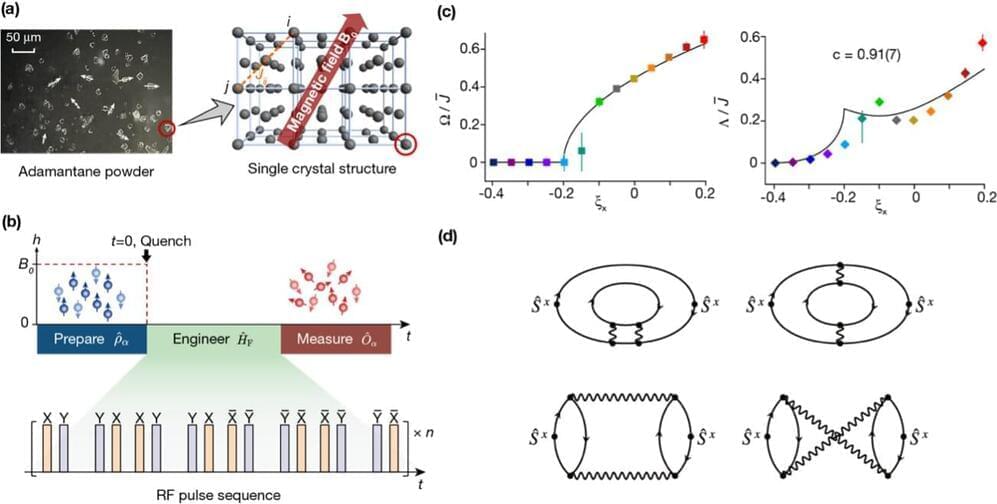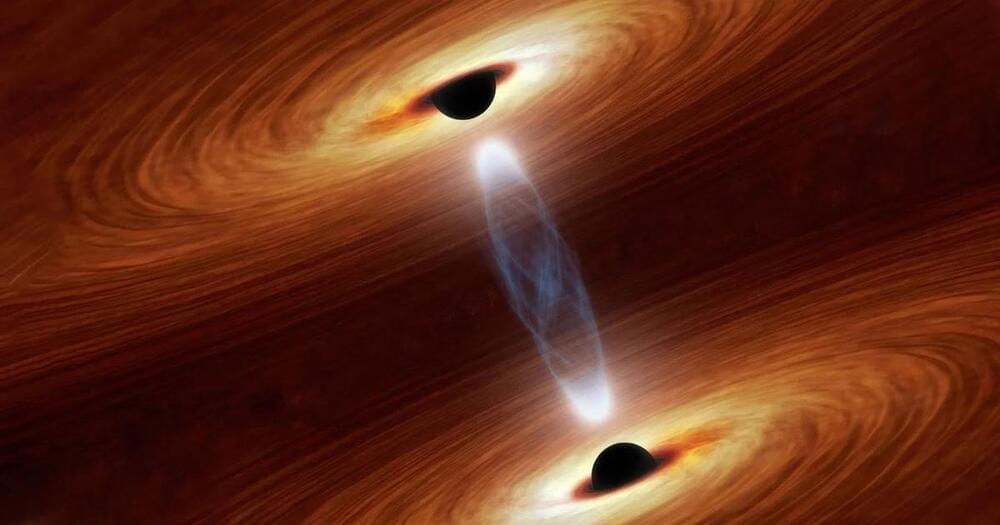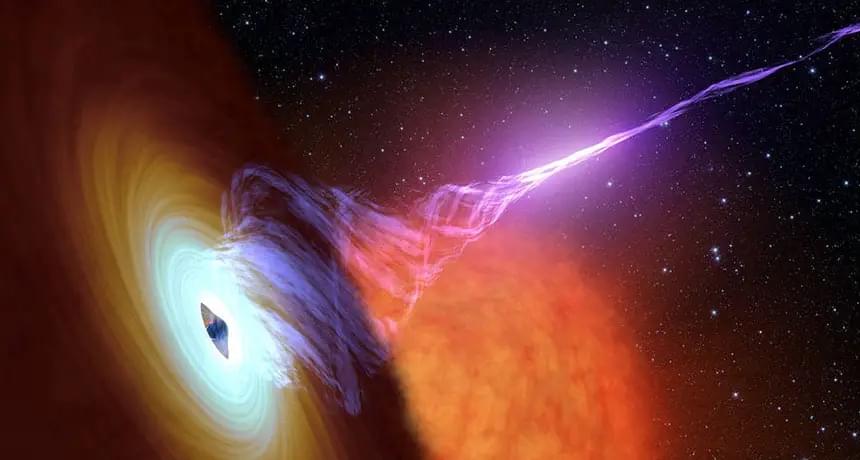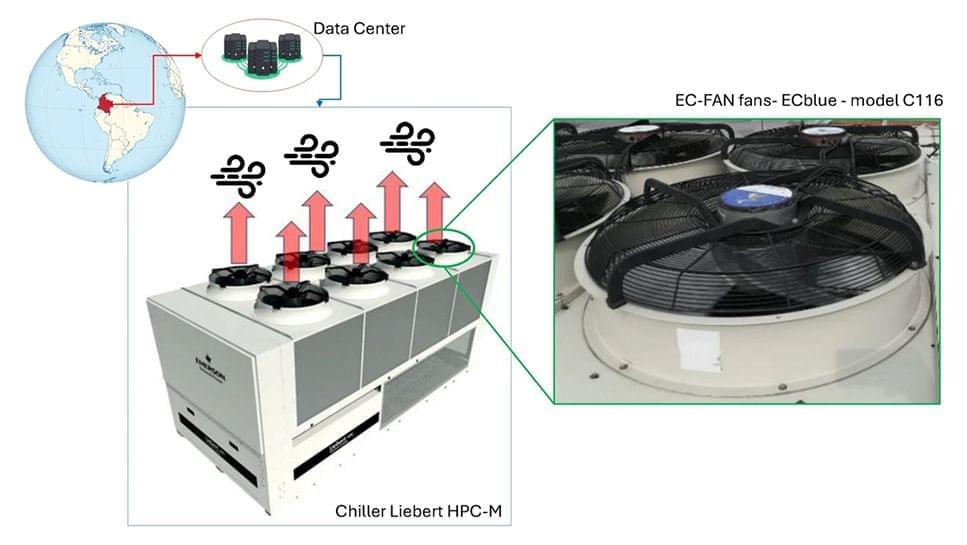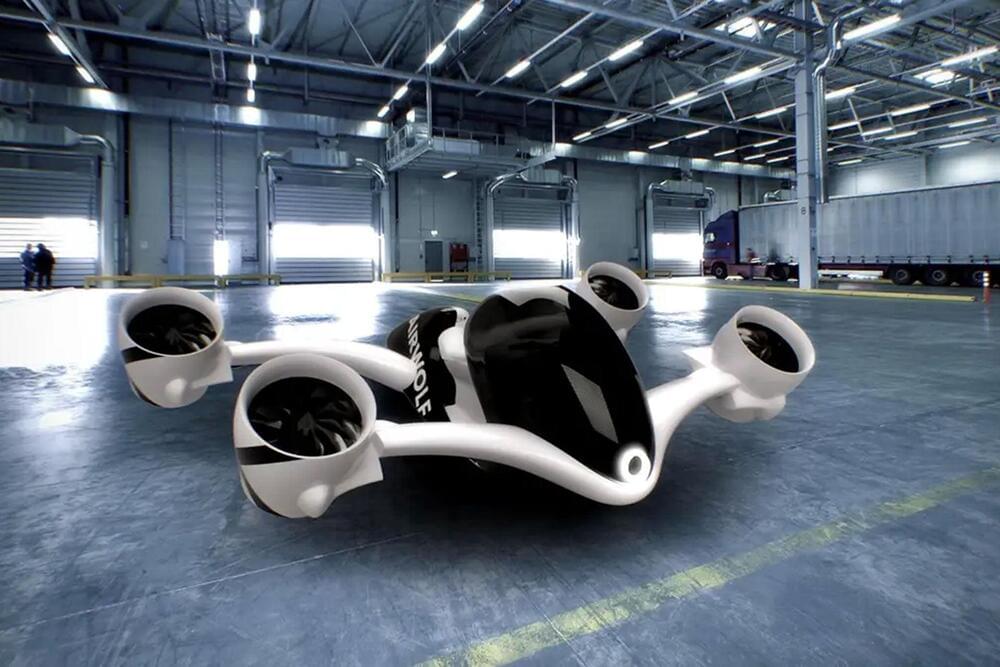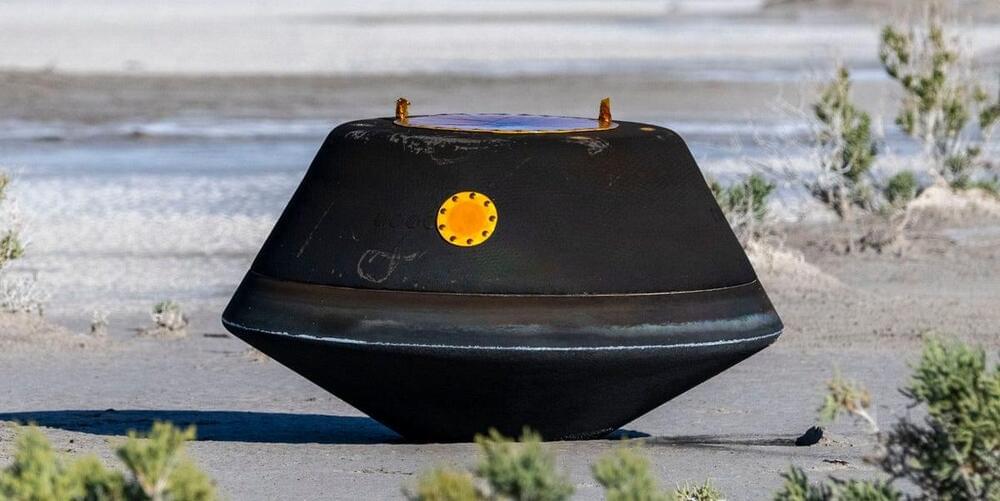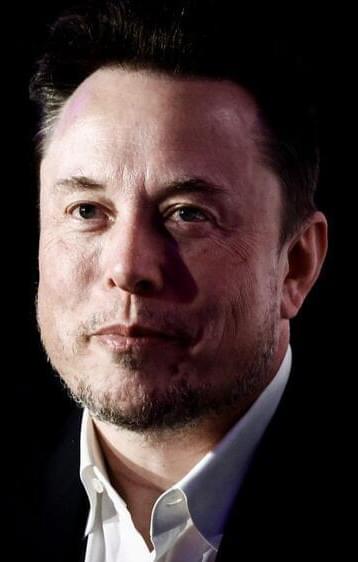A new study has uncovered the universal dynamics far from equilibrium in randomly interacting spin models, thereby complementing the well-established universality in low-energy equilibrium physics. The study, recently published in Nature Physics, was the result of a collaborative effort involving the research group led by Prof. Du Jiangfeng and Prof. Peng Xinhua at the University of Science and Technology of China (USTC), along with the theoretical groups of Prof. Zhai Hui from Tsinghua University and Dr. Zhang Pengfei from Fudan University.
Two supermassive black holes will collide in 10,000 years, warping space and time.
A Cosmic Collision in the Making
In a galaxy 9 billion light-years away, two enormous black holes are locked in a cosmic dance that will eventually end in a massive collision. These supermassive black holes, each hundreds of millions of times the mass of our sun, are currently orbiting one another. In about 10,000 years, they will merge in a violent event, unleashing enough force to distort space and time by creating gravitational waves—ripples in the universe’s fabric.
A plasma jet from galaxy M87 appears to move five times faster than light.
In the world of astronomy, a peculiar and seemingly impossible phenomenon is unfolding in galaxy M87. A beam of plasma, or energy, is shooting out from the galaxy’s core and appears to travel at five times the speed of light, as observed by the Hubble Space Telescope. Though this illusion has been known since 1995, it continues to challenge our understanding of the universe’s laws, particularly the cosmic speed limit that states nothing can move faster than light.
Evidence is found for a distant galaxy growing inside-out within the first 700 million years of the Universe. The galaxy has a dense central core comparable in mass density to local massive ellipticals, and an extended star-forming disc.
The technology’s promise can sound like science fiction—it might help us adapt to a radically different climate, or grow organs for people in need—but experts are also concerned about its potential side effects.
HVAC systems common in data centers expel warm air outdoors, creating a consistent, untapped wind resource that can be converted into electricity. In a case study of a Colombian data center, the researchers used vertical axis Tesup V7 wind turbines to capture this man-made waste wind. The turbines, installed atop chillers, were chosen because they minimized size and weight while maximizing electricity generation.
The amount of gross electricity produced annually by six wind turbines was 513.82MWh from artificial airflow, exceeding the energy consumption of the facility’s fans, and providing a surplus of 131.2MWh. The authors suggest this recycled energy can be used for other electrical needs within the data center or be injected into the electrical grid.
The study, published in the journal Scientific Reports, also highlighted the economic and environmental benefits. A positive cash flow is achieved by the third year, with an impressive internal rate of return of 50.69%. Environmentally, the system reduces CO2 emissions by approximately 300 metric tons annually.
A new technique for harvesting geothermal energy being pioneered in Utah has passed a significant milestone: Southern California Edison has contracted for enough of the energy to power 400,000 homes.
The Airwolf hoverbike is designed to soar with speed, efficiency, and agility. Using individually tilting ducted fan propulsion technology.
One proposed way of examining if such a force could exist is by closely monitoring asteroid trajectories, and few near-Earth asteroids are as well observed as Bennu. A new study by an international team of scientists analyzes Bennu to try and placing constraints on a possible fifth fundamental force in the search of ultralight dark matter.
Bennu, one of the most dangerous near-Earth objects, has been meticulously tracked by optical and radar astrometric data since it was discovered in 1999. As the destination for the OSIRIS-REx asteroid retrieval mission, additional X-band radiometric and optical navigation tracking data added even more trajectory precision. The idea is that any deviation in the expected trajectory of the asteroid could be the result of an unknown fifth force at work. The results of the study were published in the journal Nature Communications Physics.
Elon Musk, Tesla and Warner Brothers Discovery are being sued by “Blade Runner 2049” production firm Alcon Entertainment for alleged copyright infringement, which accused them on Monday of “a massive economic theft.”
The big picture: Alcon alleges the defendants used an AI-generated image like the one from “Blade Runner 2049” to promote Tesla’s robotaxi concept at Warner Bros. Discovery’s studio lot in Burbank, California, earlier this month after it denied their request to use “an iconic still” from the 2017 movie at the event.
Zoom in: The production company alleges in the suit, filed on Monday in federal court in Los Angeles, that the event used an image that was reminiscent of a scene involving Ryan Gosling’s character looking into an apocalyptic world in the sequel to the 1982 sci-fi classic “Blade Runner.”
